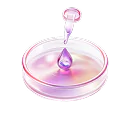The journey of life begins with a remarkable event called conception, where the fusion of an ovum and a sperm cell gives rise to a zygote. This single-celled embryo marks the beginning of a new human life, setting in motion a complex series of developmental stages. Understanding these stages is crucial for gaining insights into the early phases of embryonic growth and the foundations of human development.
Related Read: Tips for Improving Egg Quality in Female Infertility Treatment
What is a Zygote?
A zygote is the initial cell formed when a sperm fertilises an egg during the process of conception. This remarkable event initiates a series of cellular divisions and transformations, ultimately creating a fully developed human being. The zygote is the first cell of a new individual that carries the complete genetic information necessary for the individual’s growth and development.
Related Read: Factors Affecting Egg Fertilization
Stages of Embryonic Development
Embryo development is a complex process that can be divided into various stages. Let’s explore each of these stages in detail:
1. Conception: The Beginning of Life
Conception occurs when a sperm successfully penetrates and fertilises an egg cell, fusing their genetic material to create a new, unique individual. This marks the beginning of a new life as the zygote is formed and begins its journey of growth and development.
Related Read: Preparing for embryo transfer Do’s and Don’ts
2. Cleavage Stage: The Rapid Division
After conception, the zygote undergoes a series of rapid cell divisions. This is known as the cleavage stage. During this stage, the single-celled zygote undergoes a series of cell divisions (mitotic divisions), rapidly multiplying into a cluster of cells called blastomeres. This cell division process ensures the embryo’s rapid growth and expansion.
3. Morula Formation: Building the Foundation
As the cleavage stage progresses, the rapidly dividing cluster of cells (blastomeres) form a compact ball of cells known as the morula. This tightly packed cluster of cells begins the next phase in the journey of development.
During the morula stage, the cells continue to divide and reorganise, establishing the foundation for the formation of the blastocyst. The morula is a crucial transitional stage, bridging the early cell divisions and the more complex processes that will follow. As the morula develops, it undergoes a series of cellular rearrangements, setting the stage for the next phase of embryonic development.
4. Blastocyst Development: Preparing for Implantation
The next stage in development is the formation of the blastocyst. During this stage, the morula undergoes further division and reorganisation, creating an inner cell mass and an outer layer of cells.
The blastocyst comprises two distinct cell populations:
- The outer cell layer, or trophoblast, will eventually form the placenta (the tissue connecting the developing baby to the mother’s womb through the umbilical cord).
- The inner cell mass will develop into the embryo and the various tissues and organs that will develop.
Blastocyst formation is a critical milestone that prepares the embryo for the next crucial step- implantation in the uterine wall.
Related Read: Ferty 9 and its Blastocyst Culture and Transfer
5. Implantation: Anchoring to the Uterine Wall
Once the blastocyst is fully formed, it begins the implantation process, where it attaches to the nutrient-rich inner lining of the uterus (womb). Once implantation is successful, the blastocyst’s trophoblast cells outer layer) start to differentiate and form the placenta, an organ that helps in the exchange of nutrients, gases, and waste products between the developing baby and the mother.
Also Read: What to Avoid After Blastocyst Transfer?
6. Gastrulation: Establishing Germ Layers
Following implantation, the embryo enters the next phase known as gastrulation. During this stage, the inner cell mass of the blastocyst undergoes a transformation, giving rise to the three primary germ layers (group of cells that help in formation of all organs and tissues):
- Ectoderm: Forms the nervous system, epidermis (the top layer of your skin) hair and nails
- Mesoderm: Develops into the musculoskeletal system (the bones and the muscles), connective tissues (tissues that support and protect other structures), and excretory and reproductive organs such as kidney, urinary bladder and uterus.
- Endoderm: Forms the digestive system, respiratory system, and organs such as liver and pancreas.
7. Organogenesis: Building the Body Plan
Following the establishment of the germ layers, the embryo enters the stage of organ formation called organogenesis, during which the various organs and body structures begin to take shape. This phase is characterised by a process of cell differentiation, migration, and organisation, as the cells of the germ layers undergo transformations to form the various organs of the developing body.
During the organogenesis phase (stage of organ formation), the embryo undergoes a series of changes, including the development of neural tube, which will give rise to the brain and spinal cord, the development of the cardiovascular system (heart and blood vessels), and the emergence of the limb buds, which will eventually form the arms and legs.
8. Foetal Development: Maturation and Growth
The final stage of embryo development is the foetal stage, where the embryo grows and matures into a fully developed foetus (the baby in the womb). The various organs and systems undergo further development during this stage. Throughout this stage, the placenta nourishes and protects the foetus, facilitating the exchange of essential nutrients, gases, and waste byproducts between the mother and the developing child. As the foetus grows and matures, it also begins to exhibit coordinated movements and responses to external stimuli, preparing for the eventual transition to life outside the womb.
Suggested Read: 10 tips to get prepared for the baby’s arrival
What is more about the stages of the development of the embryo?
Each stage plays a crucial role in the overall growth and development of the embryo, laying the foundation for the formation of a fully functional human being.
Also Read: Tips for a Healthy Pregnancy Following Successful Fertility Treatment
Find Hope and Solutions for Infertility Problems — Explore Our Comprehensive Services
IVF Treatment
IUI Treatment
ICSI Treatment
Fertility Preservation Service
Blastocyst Culture & Transfer Treatment
Conclusion
Developing a baby is a remarkable and awe-inspiring process. From the initial conception to the formation of the fully developed foetus, each step in this journey is crucial for the successful growth and maturation of a new human life. By understanding the stages of embryo development, we can gain deeper insights into the remarkable complexity of the human body.





























